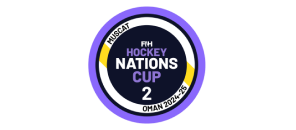
Hockey prides itself on being a gender neutral sport with equal playing opportunities for males and females. But, even in hockey, when it comes to coaching, figures and research show that there are striking gender in-balances when it comes to coaching, particularly higher up the coaching ladder.
A quick look at the number of female coaches on the bench at any international hockey match gives support to this statement. No team in the top 12 international sides has a lead female coach, and only two teams – Great Britain/England and USA – has a female assistant coach.
Scottish Hockey and the University of Stirling have joined forces to redress the gender in-balance that currently exists across sports coaching in general to help more women hockey coaches reach their potential within coaching. But first the research had to discover what the coaching landscape looked like in terms of gender.
A membership survey carried out by Scottish Hockey discovered that twice as many men as women were actively involved in coaching, with most women coaches working in child or youth coaching environments. Only one in five coaches in adult environments were women, and double the amount of men were qualified to lead coach status compared to women (30 compared to 13).
As a result of the research, Scottish Hockey set some targets. These included developing strategies to help more female coaches achieve level two or above so they could become lead coaches; identify and engage with unqualified female coaches and offer continued professional development opportunities; and promote coaching as a role for women in hockey.
The study, which was sponsored by Aberdeen Asset Management, was led by Justine Allen, from the School of Sport at the University of Stirling, in collaboration with Colleen Reid, Scottish Hockey Coaching Manager who is the lead for the programme. Over the course of the research the study revealed that a number of challenges and constraints existed that often acted as a barrier to female engagement in coaching, particularly to a higher level.
These included: family and work commitments; perceptions of the experience, knowledge, commitment and qualification needed; a lack of clarity on coaching pathways and a lack of knowledge about coaching opportunities.
Allen’s research concluded with some recommendations for improving the opportunities for female coaches. Among these measures were: creating more structured pathways, whether through clubs, districts or nationally; wider and more open advertisement of coaching opportunities; development of coaching networks; strategies to engage coaches on formal coaching course; and opportunities for those who have left hockey for a while – often through family or work commitments – to up skill and re-engage.
These conclusions were reached after interviews with 10 women who had been or were active in the field of hockey coaching. Five themes emerged which indicates why women either get into coaching or are lost from the system. One of the themes outlined how the 10 women got into coaching and shows that it is often a case of ‘being in the right place at the right time’. Being known in the club or the district as a high achieving player or someone with coaching experience will often lead to a person being approached to be a coach. The interviews with the women already coaching also indicated that opportunities to become involved in practical coaching experiences – with squads or teams, or through workshops – was invaluable and gave them a chance to observe, learn and discuss ideas with other coaches. Without this support coaches would not learn how to be a better coach or gain confidence in their role.
Another important factor is the personal support that coaches received. This could be from family members, team managers, peer-coaches, the coaching team or an education officer or coach manager from Scottish Hockey. All the coaches interviewed received support in one or more forms and felt they had developed trusted relationships within that support framework.
Scottish Hockey’s next step is to tackle the challenges and constraints that have been identified and lead the way in developing this vast pool of coaching talent that is currently untapped.






















